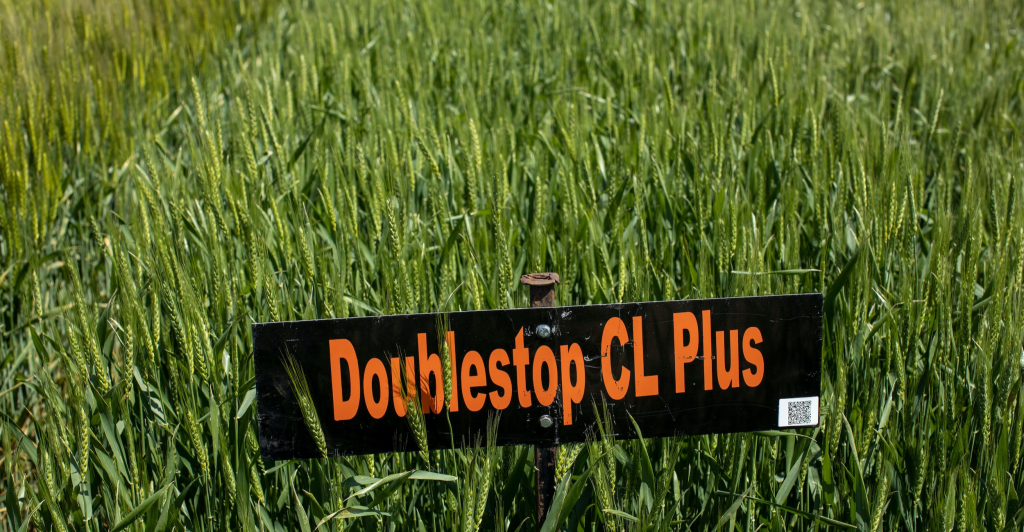
Senior Farm and Ranch Broadcaster, Ron Hays, is talking with the Executive Director of the Oklahoma Wheat Commission, Mike Schulte, about OSU wheat varieties and the 2023 wheat crop.
“it is exciting to see the lineup out of the USDA wheat variety report that came, showing what wheat producers are choosing to plant across the state, and the public research program at Oklahoma State University with their variety development program still standing strong,” Schulte said. “As we make changes in the industry, as we have more varieties coming out of the OSU public research program and more varieties coming out of private companies giving producers more options. There is more competition in all areas, so it is exciting to see that we still are doing so well with the varieties coming out of OSU as producers are using them as mainstays to plant for their crops here in Oklahoma.”
Oklahoma State University varieties continue to lead planted acres of Hard Red Winter Wheat across the state of Oklahoma, according to the March 2023 “Oklahoma Variety Report” from USDA National Agricultural Statistics Service. For the fifth year in a row, the top four leading wheat varieties planted in the state were developed by OSU with another three listed in the top nine.
Doublestop CL Plus variety takes the top spot for the second year in a row, with Smith’s Gold moving from the fourth position last year into the number two spot this year. Gallagher and Green Hammer varieties move into the third and fourth spots. The Showdown variety makes a great leap moving from 24th last year to 6th place this year. It should be no surprise to see the movement in Showdown, as it is widely adapted from west Texas to central Kansas, including the Oklahoma panhandle and has a very high yield ceiling. Showdown shows good standability and responds well to grazing with adequate seed density. Showdown also incorporates Hessian fly resistance.
“I think it (Showdown) has just been a variety that has done well across the state and did actually very well last year in the extreme drought conditions,” Schulte said. “Forty percent of its pedigree comes from the Jagger variety, which was a highly utilized wheat across the state 15 to 20 years ago. It is less tolerant to acidic soils, but it is similar to Duster and has some fly resistance, so I think producers are looking at that.”
Showdown also provides adequate protection against stripe rust, Schulte said.
“Just looking at the variety trials that we had last year, the 33 where data was collected from, Showdown yields were 111 percent of the best available genetics statewide,” Schulte said. “So, that data really indicates that it is a really good performer statewide, given the different types of environments that we have across the state, and so it is really a mainstay variety that I think if producers are making management decisions for their production purposes, they would look at it, and it would rise to the top and they would probably select that certainly to be in their rotation.”
The OSU varieties offer a genetically diverse portfolio with wide adaptations across most regions of the state. Producers looking for high yielding varieties with the Gold n Grain trademark provide the best qualities for millers and bakers. (One message rings loud and clear, based on Wheat Quality Council and preferred variety lists, millers and bakers are sourcing from Oklahoma for the most suitable wheat quality.) Other core varieties for producer use include Bentley and Iba.
Newer OSU varieties released in 2020, broke into the survey this year with significant gains in acreage. These include Butler’s Gold, a short season wheat that gives more options to producers growing multiple crops. Strad CL Plus follows right in line and is known as the Doublestop CL Plus upgrade for straw strength, forage production and maturity. The Uncharted variety comes in soon after with its significant breakthrough in Barley Yellow Dwarf protection and novel leaf rust resistance. Also listed is Baker’s Ann, a premium-quality wheat variety well suited for quality-based contract production at a yield potential comparable to Green Hammer.

With 40 percent of the crop rated poor to very poor this past week, Schulte said the stands look good in many regions, but this crop is different because it has been planted a little later.
“As I have gone around central Oklahoma, where things I thought looked probably the best in the state this past weekend, we are starting to see, in the fields, bluer wheat in the areas where the soil may not be as good,” Schulte said. “It has really been noticeable to me, just in the last couple of days, even where we have really strong, thick stands, that the crop is going backwards.”
Schulte said the numbers reflected in last week’s crop progress report are more positive than what he has seen, certainly compared to what he has seen in northwest Oklahoma and the panhandle regions.
“Things just do not look good at all talking to producers in the panhandle regions,” Schulte said. “I don’t see how we will have a dryland wheat harvest.”
With that said, Schulte added that parts of southwest Oklahoma are looking better than previous years.
“No doubt, it is going to take moisture within the next week from here on out to have a successful crop,” Schulte said.
Regarding Oklahoma State University’s new wheat variety, High Cotton, Schulte said the name of the newest variety lends itself well to showcasing the success of the variety development program at OSU.
“The numbers are there to show us that we have some really great varieties doing very well and I think the data on this is really exciting to see,” Schulte said.


















